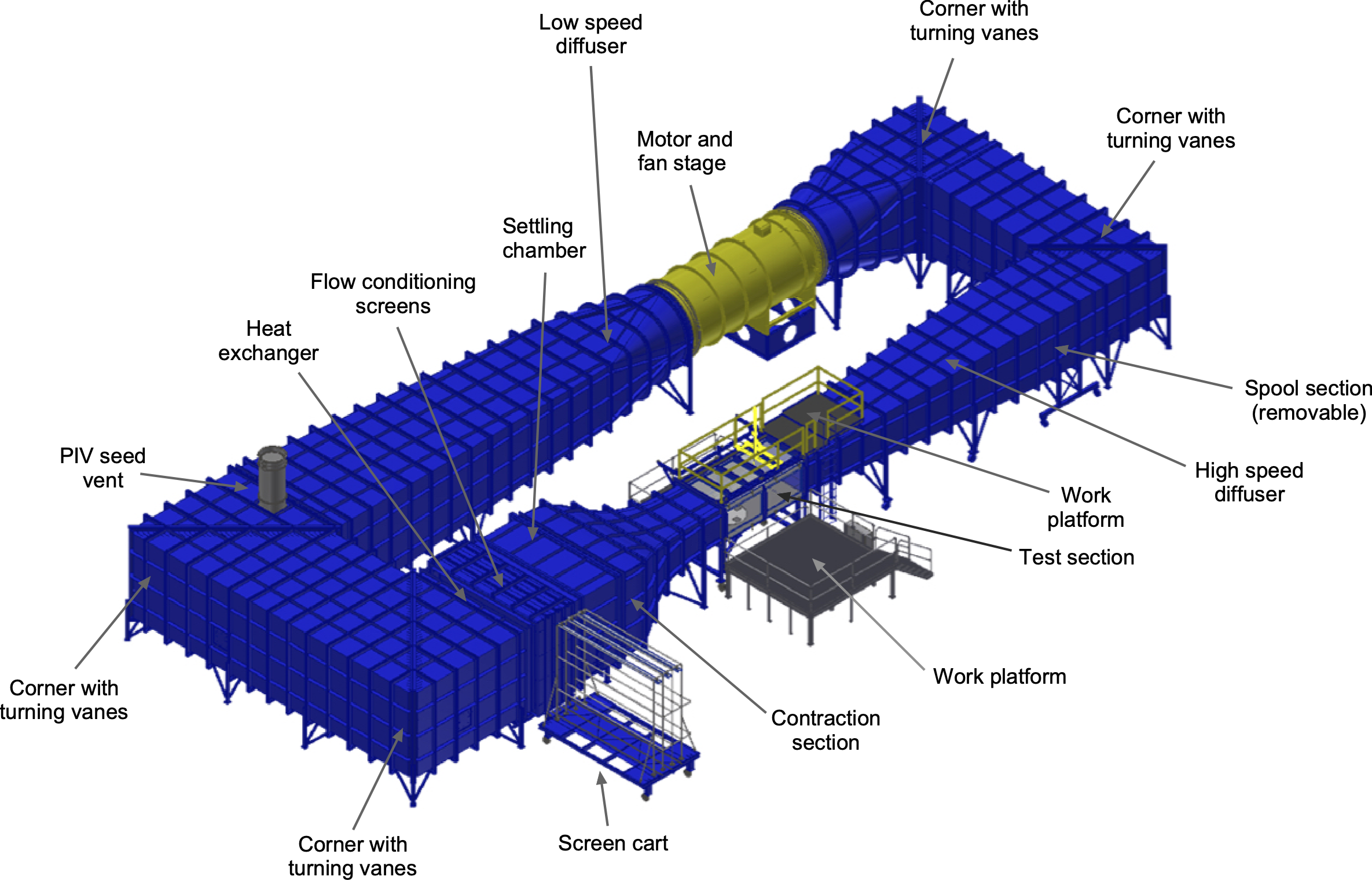59 Wind Tunnel Testing
Coming soon!!!!
Wind tunnel testing remains a cornerstone in the understanding of the aerodynamics of all types of flight vehicles. Wind tunnels come in many different sizes and configurations, with speed capabilities spanning from low subsonic to transonic to supersonic to hypersonic. Their design and operation rely heavily on the principles associated with internal flows to ensure a clean, uniform, and steady flow environment in the test section. This highly controlled flow environment enables the systematic measurement of aerodynamic forces, surface pressures, and velocity fields on scaled wings, aircraft models, propellers, and other components. While computational fluid dynamics (CFD) methods have advanced significantly over the last three decades as predictive and design tools, wind tunnel testing still remains indispensable. Today, wind tunnels are employed to study more complex flow phenomena, including flow separation, vortex-dominated flows, and shock waves. They also play a critical role in validating computational fluid dynamics (CFD) models and supporting the design and development of aerodynamic systems. Today, wind tunnels are invaluable not only in the field of aeronautical and aerospace engineering but also in automotive, civil, and environmental applications.


